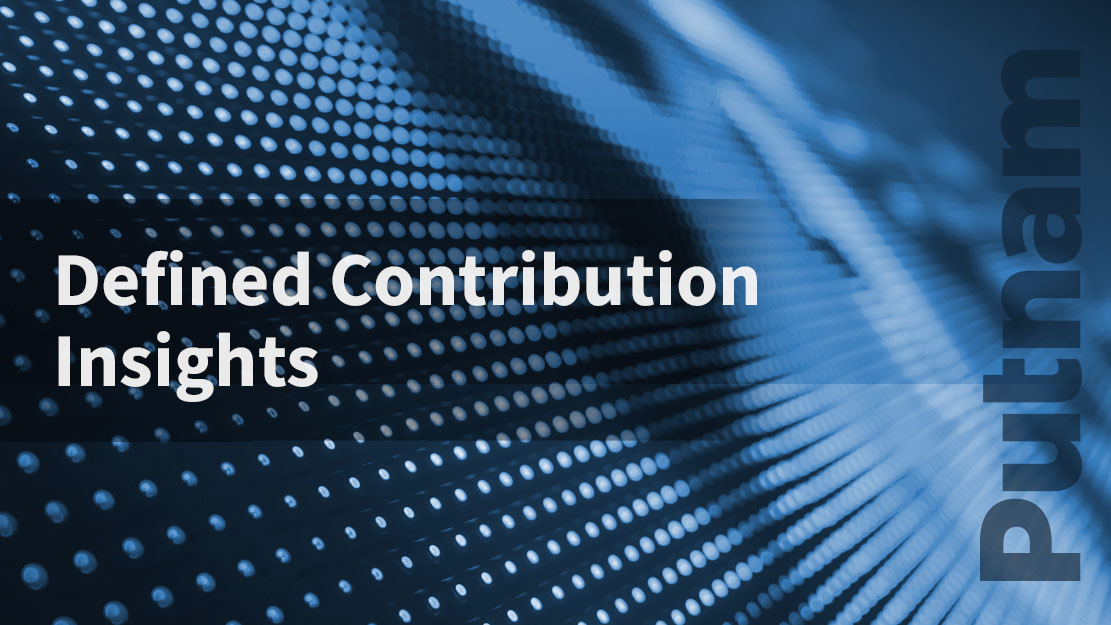- In spite of steady progress, more than 40 million workers do not have access to workplace retirement savings plans
- The new SECURE Act expands access and helps solve one of the retirement system’s biggest challenges
- The industry now needs to act to seize this opportunity to expand plans and participation
The recent passage of the SECURE Act (Setting Every Community Up for Retirement Enhancement Act of 2019) by Congress deserves applause. With broad bipartisan support, Congress made a decisive move to strengthen our retirement system. This landmark law represents the most significant changes to retirement savings in more than a decade. It could result in a major expansion of workplace retirement savings plans to millions of Americans who do not have access today.
The access gap has been one of the biggest retirement savings challenges since the creation of the 401(k). In spite of progress over the past 40 years, more than 40 million workers continue to lack access to employer-sponsored retirement savings plans. The new law could significantly increase access.
The SECURE Act could result in a major expansion of workplace retirement savings plans to millions of Americans who do not have access today.
Working with small employers
The SECURE Act creates incentives for small businesses to efficiently offer retirement savings plans. Smaller businesses are a major employer in our economy. Yet many do not have the resources to offer workplace retirement plans. Administration can be costly and cumbersome.
Here are a few of the many ways that the new law helps small businesses:
- Creates “open” multiple-employer plans, also called pooled employer plans (PEPs), allowing businesses to join together and offer a retirement savings plan
- Increases the auto-enrollment safe harbor cap on contributions
- Increases the tax credit for smaller employers (100 or fewer employees) establishing retirement plans
- Establishes a new tax credit for auto-enrollment retirement plans
- Allows long-term, part-time workers to participate in retirement plans
Watch for small employers to respond enthusiastically to these provisions. We should see the number of workplace plans climb, along with access for millions of workers. I firmly believe the most efficient path to retirement savings success is through the workplace.
Bolstering automatic features, such as auto-enrollment is also likely to increase participation — and improve the probability of better retirement outcomes. Many 401(k) plan design innovations were based on behavioral finance. Researchers found that, through automaticity, individuals could receive the "nudge" they needed to start and stay committed to saving.
Lifetime income: The Holy Grail
The SECURE Act introduces another major advance by making it easier for plan sponsors to offer annuities within plans. Annuities have been a key feature of defined benefit pension plans, but are rare in 401(k) plans. The Act should remedy this because it reduces fiduciary risk for plan sponsors and makes annuities portable to another retirement plan or IRA.
Annuities provide guaranteed lifetime income, helping to solve the longevity risk that we face as individuals by pooling this risk across a larger population. Once annuities are available in larger proportion of 401(k) plans, participants stand to benefit by having access to assured income at older ages.
It will take some time, of course. Plan sponsors will need to learn about lifetime income options, which will be new to many of them. They will also need to choose specific products to offer, and to adjust recordkeeping operations for these products. Participants also need education. Still, while we can’t expect it to happen overnight, we are likely to see a surge of annuity products, and that’s a good thing.
America’s retirement journey
As part of the retirement industry for three decades, I’ve had a close-up view of the dynamic changes in workplace savings. As the 401(k) has evolved, the goal remains the same: to give everyone a chance for a dignified retirement. Over the years, I’ve seen amazing progress toward that goal.
When the Pension Protection Act of 2006 (PPA) became law, we knew it would have an impact on the retirement industry. Since then, the effects have been researched and documented. Auto-enrollment rates, default contribution rates, and employer contribution rates all increased after the PPA (Urban Institute, 2015). The legislation transformed retirement plan provisions.
- Use of automatic enrollment rose to 60% in all plans in 2018 from 41.8% in 2010 (Plan Sponsor Council of America, 2018).
- The number of plans with automatic enrollment that also offer auto-escalation features rose to 78.2% in 2018 from 65.2% in 2013 (PSCA).
- The percentage of plans with auto-enrollment using a default deferral rate of 6% rose to 29.7% in 2018 from 23.8% in 2017 (PSCA).
The result: higher participation and saving rates . Among workers automatically-enrolled in a workplace plan, research demonstrates that, on average, 90% of participants stay in the plan and less than 10% opt out. A 2017 study found that among plans without auto features, only 44% of savers had deferral rates of 10% or more. For plans with auto-enrollment, 67% saved 10% or more. Where auto-escalation was also in place, 70% of participants were saving 10% or more of income. (DCIIA 2017)
The time to implement is now
The innovations around plan design features validate something that I have said for many years: “There is nothing wrong with the 401(k) system that can’t be fixed by what’s right with the 401(k).”
We’ve seen widespread — but not universal — adoption of best practices. The challenge is to motivate employers — to transform evidence into implementation. That challenge will certainly continue, but with an even greater potential bounty thanks to the collection of policies and innovations enacted by the SECURE Act.
To be sure, this law on its own does not address all aspects of retirement reform. There is still work to be done for those in the gig economy, for example, to make it easier for freelance workers to save for the future. Some provisions may need additional clarity or regulation to improve their implementation.
Congress took the first step
It’s up to businesses, plan sponsors, industry stakeholders, and individual savers to seize the opportunity and take advantage of the provisions in the new law.
The SECURE Act should go a long way in meeting several goals we have talked about for the next generation 401(k) — Workplace Savings 4.0 — including the creation of MEPs, tax incentives for plan creation with automatic features, and support for adoption of lifetime income options in plans.
We’re getting closer to our goal for all workers to have a shot at saving for a dignified retirement. It’s a great time to pause and applaud the work of policy makers. And then it’s time to get to work and implement these thoughtful measures.
Robert L. Reynolds, President and CEO of Putnam Investments, is the author of From Here to Security: How Workplace Savings Can Keep America's Promise.
320599
For informational purposes only. Not an investment recommendation.
This material is provided for limited purposes. It is not intended as an offer or solicitation for the purchase or sale of any financial instrument, or any Putnam product or strategy. References to specific asset classes and financial markets are for illustrative purposes only and are not intended to be, and should not be interpreted as, recommendations or investment advice. The opinions expressed in this article represent the current, good-faith views of the author(s) at the time of publication. The views are provided for informational purposes only and are subject to change. This material does not take into account any investor’s particular investment objectives, strategies, tax status, or investment horizon. Investors should consult a financial advisor for advice suited to their individual financial needs. Putnam Investments cannot guarantee the accuracy or completeness of any statements or data contained in the article. Predictions, opinions, and other information contained in this article are subject to change. Any forward-looking statements speak only as of the date they are made, and Putnam assumes no duty to update them. Forward-looking statements are subject to numerous assumptions, risks, and uncertainties. Actual results could differ materially from those anticipated. Past performance is not a guarantee of future results. As with any investment, there is a potential for profit as well as the possibility of loss.
Diversification does not guarantee a profit or ensure against loss. It is possible to lose money in a diversified portfolio.
Consider these risks before investing: International investing involves certain risks, such as currency fluctuations, economic instability, and political developments. Investments in small and/or midsize companies increase the risk of greater price fluctuations. Bond investments are subject to interest-rate risk, which means the prices of the fund’s bond investments are likely to fall if interest rates rise. Bond investments also are subject to credit risk, which is the risk that the issuer of the bond may default on payment of interest or principal. Interest-rate risk is generally greater for longer-term bonds, and credit risk is generally greater for below-investment-grade bonds, which may be considered speculative. Unlike bonds, funds that invest in bonds have ongoing fees and expenses. Lower-rated bonds may offer higher yields in return for more risk. Funds that invest in government securities are not guaranteed. Mortgage-backed securities are subject to prepayment risk. Commodities involve the risks of changes in market, political, regulatory, and natural conditions. You can lose money by investing in a mutual fund.
Putnam Retail Management.








